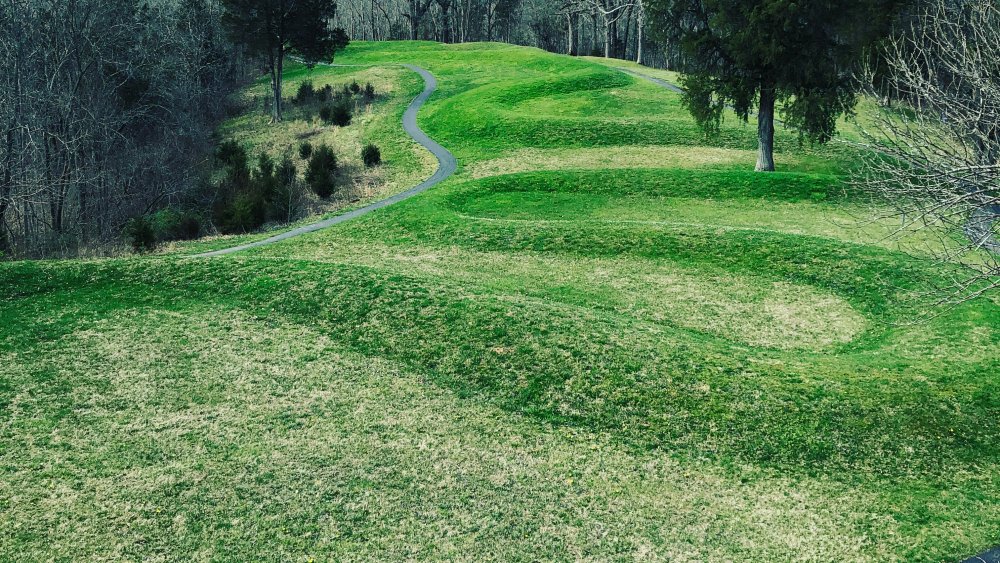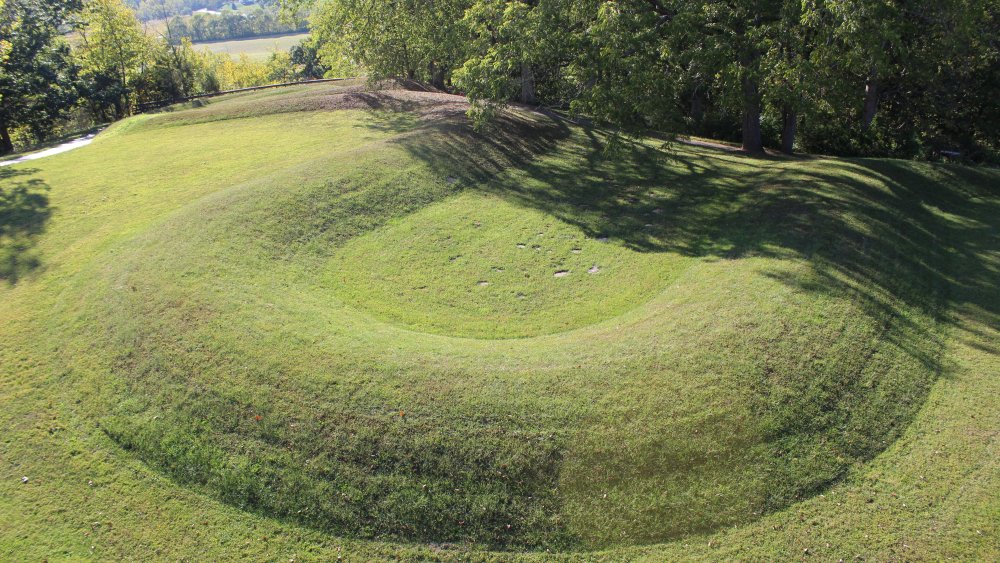The Mystery Of Ohio's Serpent Mound
In Ohio, something mysterious is on the ground. There's an undulating mound in the middle of a green field. People call it the Serpent Mound, and it's been there for generations.
The Serpent Mound sits in Adams County, about 70 miles east of Cincinnati, and has been recognized as a National Historic Landmark. The mound may look strange, but it wasn't put there by aliens; it's believed it was constructed by Native American settlers of Ohio, according to the Ohio History Connection. Two tribes could've been responsible for the mound: the Adena and the Fort Ancient cultures. Archaeologists are still trying to pin down who precisely erected the effigy. Nearby are three other burial mounds, two built by the Adena and another made by the Fort Ancient. The Serpent Mound runs 1,348-feet long, says History, and is about 4.9 feet at its tallest. It's the largest snake effigy in the world. It's even located on a meteor crater.
As the American Archeology Magazine reports, the mound first gained public attention after journalist Ephraim Squier and physician Edwin Davis included the area in their book detailing ancient sites. Both were avid artifact collectors and visited the site in 1846, thinking it was built for defense. This visit soon ignited scientific curiosity which focused on the Serpent Mound.
Excavations just found more questions than answers
The Ohio History Connection notes that several archaeological digs have attempted to figure out the mound's origins. In the late 19th century, the first few digs, lead by Frederic Ward Putnam, found no artifacts to point to one culture. But since there were two Adena burial sites nearby, they assumed that the Adena built the serpent. A 1991 expedition upended that theory. Carbon dating put the mound around 900 years old, suggesting it was the Fort Ancient, who flourished later than the Adena, who made the serpent. A second round of carbon dating indicated that parts of the mound were older, once again pointing to the Adena. Basically, no one knows for sure, so more excavations are still being planned.
The mound may also hold celestial secrets. According to History Daily, researchers in 1987 said the head of the serpent aligns with the sunset during the summer solstice, and the coils of its body correspond with the moon's phases. This heavenly effect attracts many visitors to the site, reported ABC. But researchers said this is probably not the only reason why the mound was built.
Despite uncertainty over who built it and the ongoing debate on what it's for, the site has become significant, as History writes. There's now a museum, and the entire area is being considered for inclusion on the UNESCO World Heritage List.

